Deck 3: Polynomial and Rational Functions
Question
Question
Question
Question
Question
Question
Question
Question
Question
Question
Question
Question
Question
Question
Question
Question
Question
Question
Question
Question
Question
Question
Question
Question
Question
Question
Question
Question
Question
Question
Question
Question
Question
Question
Question
Question
Question
Question
Question
Question
Question
Question
Question
Question
Question
Question
Question
Question
Question
Question
Question
Question
Question
Question
Question
Question
Question
Question
Question
Question
Question
Question
Question
Question
Question
Question
Question
Question
Question
Question
Question
Question
Question
Question
Question
Question
Question
Question
Question
Question

Unlock Deck
Sign up to unlock the cards in this deck!
Unlock Deck
Unlock Deck
1/350
Play
Full screen (f)
Deck 3: Polynomial and Rational Functions
1
State whether the function is a polynomial function or not. If it is, give its degree. If it is not, tell why not.
-
A) Yes; degree 8
B) Yes; degree 7
C) No; has a non-integer coefficient
D) Yes; degree 4
-
A) Yes; degree 8
B) Yes; degree 7
C) No; has a non-integer coefficient
D) Yes; degree 4
Yes; degree 4
2
State whether the function is a polynomial function or not. If it is, give its degree. If it is not, tell why not.
-
A) Yes; degree 14
B) Yes; degree 11
C) Yes; degree 7
D) Yes; degree 77
-
A) Yes; degree 14
B) Yes; degree 11
C) Yes; degree 7
D) Yes; degree 77
Yes; degree 14
3
Use transformations of the graph o to graph the function.
-
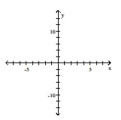
A)
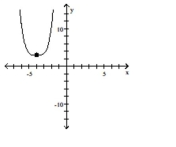
B)

C)
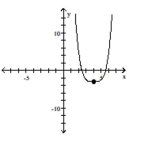
D)
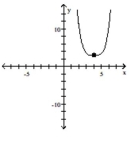
-

A)

B)

C)

D)


4
Use transformations of the graph o to graph the function.
-
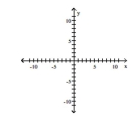
A)
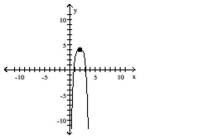
B)
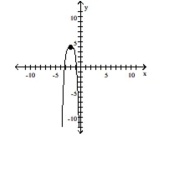
C)
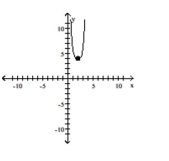
D)
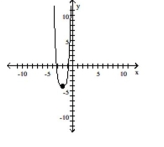
-

A)

B)

C)

D)


Unlock Deck
Unlock for access to all 350 flashcards in this deck.
Unlock Deck
k this deck
5
Use transformations of the graph o to graph the function.
-
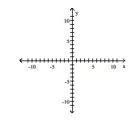
A)
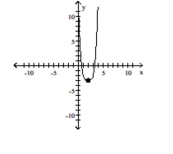
B)
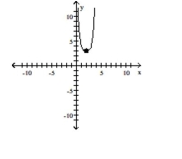
C)

D)
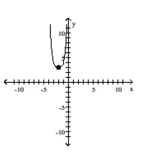
-

A)

B)

C)

D)


Unlock Deck
Unlock for access to all 350 flashcards in this deck.
Unlock Deck
k this deck
6
State whether the function is a polynomial function or not. If it is, give its degree. If it is not, tell why not.
-
A) Yes; degree -3
B) Yes; degree 3
C) No; it is a ratio of polynomials
D) Yes; degree 4
-
A) Yes; degree -3
B) Yes; degree 3
C) No; it is a ratio of polynomials
D) Yes; degree 4

Unlock Deck
Unlock for access to all 350 flashcards in this deck.
Unlock Deck
k this deck
7
State whether the function is a polynomial function or not. If it is, give its degree. If it is not, tell why not.
-
A) No; x is raised to the negative 6 power
B) Yes; degree 6
C) Yes; degree
D) Yes; degree -6
-
A) No; x is raised to the negative 6 power
B) Yes; degree 6
C) Yes; degree
D) Yes; degree -6

Unlock Deck
Unlock for access to all 350 flashcards in this deck.
Unlock Deck
k this deck
8
State whether the function is a polynomial function or not. If it is, give its degree. If it is not, tell why not.
-
A) Yes; degree 1
B) Yes; degree 2
C) Yes; degree 0
D) No; it is a product
-
A) Yes; degree 1
B) Yes; degree 2
C) Yes; degree 0
D) No; it is a product

Unlock Deck
Unlock for access to all 350 flashcards in this deck.
Unlock Deck
k this deck
9
State whether the function is a polynomial function or not. If it is, give its degree. If it is not, tell why not.
-
A) Yes; degree 6
B) Yes; degree 5
C) Yes; degree 3
D) No; the last term has no variable
-
A) Yes; degree 6
B) Yes; degree 5
C) Yes; degree 3
D) No; the last term has no variable

Unlock Deck
Unlock for access to all 350 flashcards in this deck.
Unlock Deck
k this deck
10
State whether the function is a polynomial function or not. If it is, give its degree. If it is not, tell why not.
f(x) = 5
A) No; it is a constant
B) Yes; degree 0
C) Yes; degree 1
D) No; it contains no variables
f(x) = 5
A) No; it is a constant
B) Yes; degree 0
C) Yes; degree 1
D) No; it contains no variables

Unlock Deck
Unlock for access to all 350 flashcards in this deck.
Unlock Deck
k this deck
11
State whether the function is a polynomial function or not. If it is, give its degree. If it is not, tell why not.
-
A) Yes; degree 0
B) Yes; degree 5
C) No; x has a fractional coefficient
D) Yes; degree 1
-
A) Yes; degree 0
B) Yes; degree 5
C) No; x has a fractional coefficient
D) Yes; degree 1

Unlock Deck
Unlock for access to all 350 flashcards in this deck.
Unlock Deck
k this deck
12
State whether the function is a polynomial function or not. If it is, give its degree. If it is not, tell why not.
-
A) Yes; degree 1
B) No; it is a product
C) No; x is raised to non-integer power
D) Yes; degree 2
-
A) Yes; degree 1
B) No; it is a product
C) No; x is raised to non-integer power
D) Yes; degree 2

Unlock Deck
Unlock for access to all 350 flashcards in this deck.
Unlock Deck
k this deck
13
Use transformations of the graph o to graph the function.
-
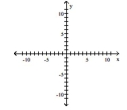
A)
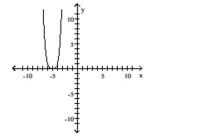
B)
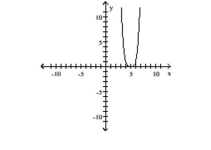
C)
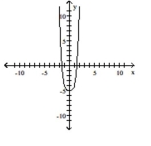
D)
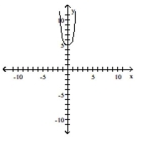
-

A)

B)

C)

D)


Unlock Deck
Unlock for access to all 350 flashcards in this deck.
Unlock Deck
k this deck
14
State whether the function is a polynomial function or not. If it is, give its degree. If it is not, tell why not.
-
A) Yes; degree 0
B) Yes; degree 6
C) Yes; degree 1
D) No; x is raised to a negative power
-
A) Yes; degree 0
B) Yes; degree 6
C) Yes; degree 1
D) No; x is raised to a negative power

Unlock Deck
Unlock for access to all 350 flashcards in this deck.
Unlock Deck
k this deck
15
Use transformations of the graph o to graph the function.
-
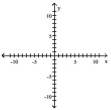
A)

B)
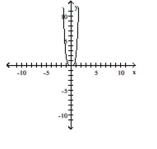
C)
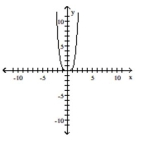
D)
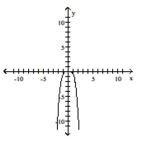
-

A)

B)

C)

D)


Unlock Deck
Unlock for access to all 350 flashcards in this deck.
Unlock Deck
k this deck
16
Use transformations of the graph o to graph the function.
-

A)
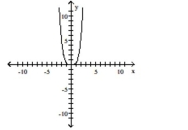
B)
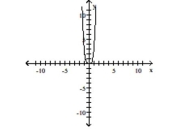
C)
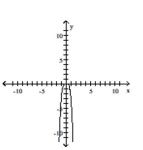
D)
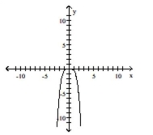
-

A)

B)

C)

D)


Unlock Deck
Unlock for access to all 350 flashcards in this deck.
Unlock Deck
k this deck
17
State whether the function is a polynomial function or not. If it is, give its degree. If it is not, tell why not.
-
A) Yes; degree 7
B) Yes; degree 1
C) Yes; degree 3
D) Yes; degree 5
-
A) Yes; degree 7
B) Yes; degree 1
C) Yes; degree 3
D) Yes; degree 5

Unlock Deck
Unlock for access to all 350 flashcards in this deck.
Unlock Deck
k this deck
18
State whether the function is a polynomial function or not. If it is, give its degree. If it is not, tell why not.
-
A) Yes; degree 1
B) No; x is a negative term
C) No; it is a ratio
D) Yes; degree 4
-
A) Yes; degree 1
B) No; x is a negative term
C) No; it is a ratio
D) Yes; degree 4

Unlock Deck
Unlock for access to all 350 flashcards in this deck.
Unlock Deck
k this deck
19
State whether the function is a polynomial function or not. If it is, give its degree. If it is not, tell why not.
-
A) Yes; degree
B) Yes; degree 3
C) Yes; degree 6
D) No; is raised to non-integer power
-
A) Yes; degree
B) Yes; degree 3
C) Yes; degree 6
D) No; is raised to non-integer power

Unlock Deck
Unlock for access to all 350 flashcards in this deck.
Unlock Deck
k this deck
20
Use transformations of the graph o to graph the function.
-
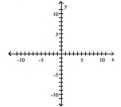
A)
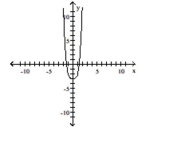
B)
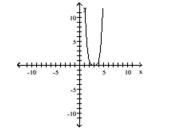
C)
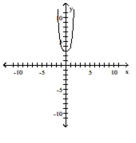
D)
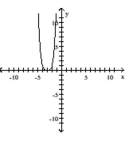
-

A)

B)

C)

D)


Unlock Deck
Unlock for access to all 350 flashcards in this deck.
Unlock Deck
k this deck
21
Form a polynomial whose zeros and degree are given. Use a leading coefficient of 1.
-Zeros: 3, multiplicity 2; -3, multiplicity 2; degree 4
A)
B)
C)
D)
-Zeros: 3, multiplicity 2; -3, multiplicity 2; degree 4
A)
B)
C)
D)

Unlock Deck
Unlock for access to all 350 flashcards in this deck.
Unlock Deck
k this deck
22
Form a polynomial whose zeros and degree are given. Use a leading coefficient of 1.
-Zeros: -5, -3, 3; degree 3
A)
B)
C)
D)
-Zeros: -5, -3, 3; degree 3
A)
B)
C)
D)

Unlock Deck
Unlock for access to all 350 flashcards in this deck.
Unlock Deck
k this deck
23
Use transformations of the graph o to graph the function.
-
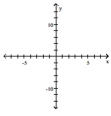
A)
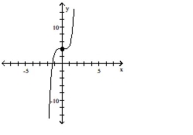
B)
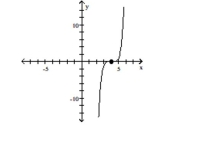
C)
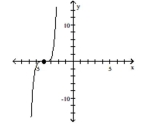
D)
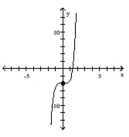
-

A)

B)

C)

D)


Unlock Deck
Unlock for access to all 350 flashcards in this deck.
Unlock Deck
k this deck
24
Use transformations of the graph o to graph the function.
-
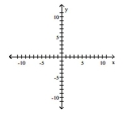
A)
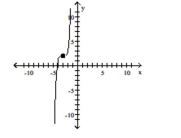
B)
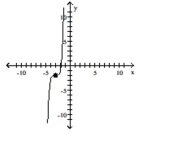
C)
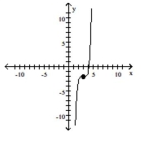
D)
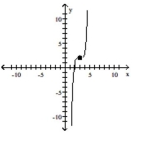
-

A)

B)

C)

D)


Unlock Deck
Unlock for access to all 350 flashcards in this deck.
Unlock Deck
k this deck
25
Use transformations of the graph o to graph the function.
-
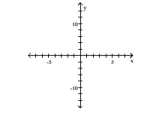
A)
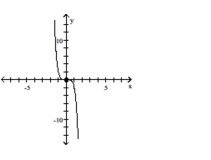
B)
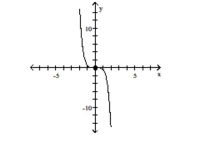
C)
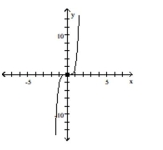
D)
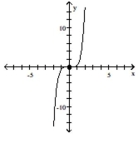
-

A)

B)

C)

D)


Unlock Deck
Unlock for access to all 350 flashcards in this deck.
Unlock Deck
k this deck
26
Use transformations of the graph o to graph the function.
-
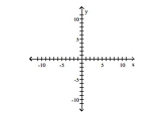
A)

B)
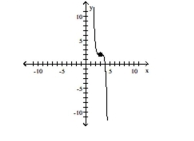
C)
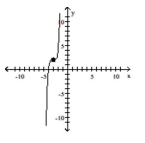
D)
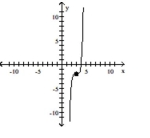
-

A)

B)

C)

D)


Unlock Deck
Unlock for access to all 350 flashcards in this deck.
Unlock Deck
k this deck
27
For the polynomial, list each real zero and its multiplicity. Determine whether the graph crosses or touches the x-axis at
each x -intercept.
-
A) 3, multiplicity 1, crosses x-axis; -7, multiplicity 4, touches x-axis
B) -3, multiplicity 1, touches x-axis; 7, multiplicity 4, crosses x-axis
C) -3, multiplicity 1, crosses x-axis; 7, multiplicity 4, touches x-axis
D) 3, multiplicity 1, touches x-axis; -7, multiplicity 4, crosses x-axis
each x -intercept.
-
A) 3, multiplicity 1, crosses x-axis; -7, multiplicity 4, touches x-axis
B) -3, multiplicity 1, touches x-axis; 7, multiplicity 4, crosses x-axis
C) -3, multiplicity 1, crosses x-axis; 7, multiplicity 4, touches x-axis
D) 3, multiplicity 1, touches x-axis; -7, multiplicity 4, crosses x-axis

Unlock Deck
Unlock for access to all 350 flashcards in this deck.
Unlock Deck
k this deck
28
Form a polynomial whose zeros and degree are given. Use a leading coefficient of 1.
-Zeros: -5, multiplicity 2; -1, multiplicity 1; degree 3
A)
B)
C)
D)
-Zeros: -5, multiplicity 2; -1, multiplicity 1; degree 3
A)
B)
C)
D)

Unlock Deck
Unlock for access to all 350 flashcards in this deck.
Unlock Deck
k this deck
29
Use transformations of the graph o to graph the function.
-
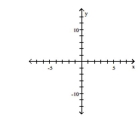
A)
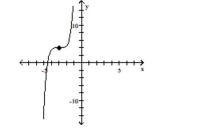
B)
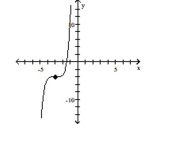
C)
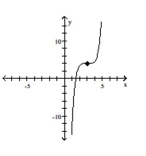
D)
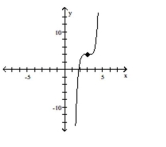
-

A)

B)

C)

D)


Unlock Deck
Unlock for access to all 350 flashcards in this deck.
Unlock Deck
k this deck
30
For the polynomial, list each real zero and its multiplicity. Determine whether the graph crosses or touches the x-axis at
each x -intercept.
-
A) , multiplicity 4 , touches -axis; 1 , multiplicity 5 , crosses -axis
B) , multiplicity 4 , crosses -axis; 1 , multiplicity 5 , touches -axis
C) , multiplicity 4 , touches -axis; , multiplicity 5 , crosses -axis
D) , multiplicity 4 , crosses -axis; , multiplicity 5 , touches -axis
each x -intercept.
-
A) , multiplicity 4 , touches -axis; 1 , multiplicity 5 , crosses -axis
B) , multiplicity 4 , crosses -axis; 1 , multiplicity 5 , touches -axis
C) , multiplicity 4 , touches -axis; , multiplicity 5 , crosses -axis
D) , multiplicity 4 , crosses -axis; , multiplicity 5 , touches -axis

Unlock Deck
Unlock for access to all 350 flashcards in this deck.
Unlock Deck
k this deck
31
For the polynomial, list each real zero and its multiplicity. Determine whether the graph crosses or touches the x-axis at
each x -intercept.
-
A) 6, multiplicity 1, crosses x-axis; -7, multiplicity 3, crosses x-axis
B) -6, multiplicity 1, touches x-axis; 7, multiplicity 3
C) -6, multiplicity 1, crosses x-axis; 7, multiplicity 3, crosses x-axis
D) 6, multiplicity 1, touches x-axis; -7, multiplicity 3
each x -intercept.
-
A) 6, multiplicity 1, crosses x-axis; -7, multiplicity 3, crosses x-axis
B) -6, multiplicity 1, touches x-axis; 7, multiplicity 3
C) -6, multiplicity 1, crosses x-axis; 7, multiplicity 3, crosses x-axis
D) 6, multiplicity 1, touches x-axis; -7, multiplicity 3

Unlock Deck
Unlock for access to all 350 flashcards in this deck.
Unlock Deck
k this deck
32
Use transformations of the graph o to graph the function.
-
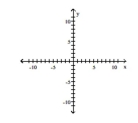
A)
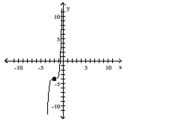
B)
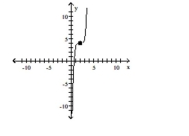
C)
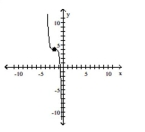
D)

-

A)

B)

C)

D)


Unlock Deck
Unlock for access to all 350 flashcards in this deck.
Unlock Deck
k this deck
33
Form a polynomial whose zeros and degree are given. Use a leading coefficient of 1.
-Zeros: -4, -3, -1, 5; degree 4
A)
B)
C)
D)
-Zeros: -4, -3, -1, 5; degree 4
A)
B)
C)
D)

Unlock Deck
Unlock for access to all 350 flashcards in this deck.
Unlock Deck
k this deck
34
Use transformations of the graph o to graph the function.
-
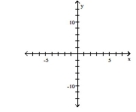
A)
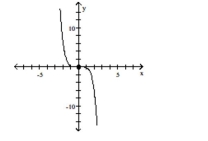
B)
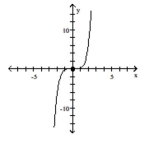
C)
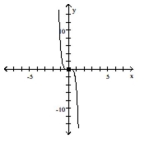
D)
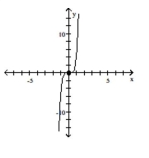
-

A)

B)

C)

D)


Unlock Deck
Unlock for access to all 350 flashcards in this deck.
Unlock Deck
k this deck
35
Use transformations of the graph o to graph the function.
-
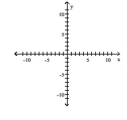
A)
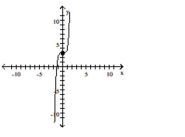
B)
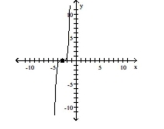
C)

D)
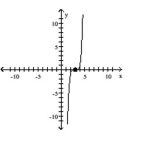
-

A)

B)

C)

D)


Unlock Deck
Unlock for access to all 350 flashcards in this deck.
Unlock Deck
k this deck
36
Use transformations of the graph o to graph the function.
-
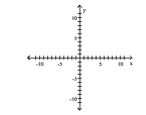
A)
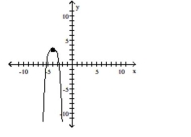
B)
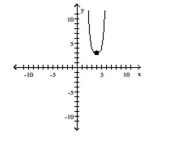
C)
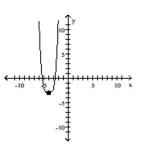
D)
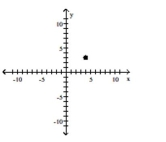
-

A)

B)

C)

D)


Unlock Deck
Unlock for access to all 350 flashcards in this deck.
Unlock Deck
k this deck
37
Form a polynomial whose zeros and degree are given. Use a leading coefficient of 1.
-Zeros: -1, 1, - 8; degree 3
A)
B)
C)
D)
-Zeros: -1, 1, - 8; degree 3
A)
B)
C)
D)

Unlock Deck
Unlock for access to all 350 flashcards in this deck.
Unlock Deck
k this deck
38
Form a polynomial whose zeros and degree are given. Use a leading coefficient of 1.
-Zeros: 0, - 7, 6; degree 3
A)
B)
C)
D)
-Zeros: 0, - 7, 6; degree 3
A)
B)
C)
D)

Unlock Deck
Unlock for access to all 350 flashcards in this deck.
Unlock Deck
k this deck
39
For the polynomial, list each real zero and its multiplicity. Determine whether the graph crosses or touches the x-axis at
each x -intercept.
-
A) -6, multiplicity 2, touches x-axis
B) -5, multiplicity 1, touches x-axis; -6, multiplicity 2, crosses x-axis
C) -6, multiplicity 2, crosses x-axis
D) -5, multiplicity 1, crosses x-axis; -6, multiplicity 2, touches x-axis
each x -intercept.
-
A) -6, multiplicity 2, touches x-axis
B) -5, multiplicity 1, touches x-axis; -6, multiplicity 2, crosses x-axis
C) -6, multiplicity 2, crosses x-axis
D) -5, multiplicity 1, crosses x-axis; -6, multiplicity 2, touches x-axis

Unlock Deck
Unlock for access to all 350 flashcards in this deck.
Unlock Deck
k this deck
40
Form a polynomial whose zeros and degree are given. Use a leading coefficient of 1.
-Zeros: -3, -2, 3; degree 3
A)
B)
C)
D)
-Zeros: -3, -2, 3; degree 3
A)
B)
C)
D)

Unlock Deck
Unlock for access to all 350 flashcards in this deck.
Unlock Deck
k this deck
41
For the polynomial, list each real zero and its multiplicity. Determine whether the graph crosses or touches the x-axis at
each x -intercept.
-
A) , multiplicity 2 , touches -axis
B) , multiplicity 2 , touches -axis; , multiplicity 3 , crosses -axis
C) , multiplicity 2 , crosses -axis
D) , multiplicity 2 , touches -axis; 7 , multiplicity 3 , crosses -axis
each x -intercept.
-
A) , multiplicity 2 , touches -axis
B) , multiplicity 2 , touches -axis; , multiplicity 3 , crosses -axis
C) , multiplicity 2 , crosses -axis
D) , multiplicity 2 , touches -axis; 7 , multiplicity 3 , crosses -axis

Unlock Deck
Unlock for access to all 350 flashcards in this deck.
Unlock Deck
k this deck
42
Find the x- and y-intercepts of f.
-
A) -intercepts: -intercept: 0
B) -intercepts: ; y-intercept: 4
C) -intercepts: ; y-intercept: 0
D) -intercepts: -intercept: 4
-
A) -intercepts: -intercept: 0
B) -intercepts: ; y-intercept: 4
C) -intercepts: ; y-intercept: 0
D) -intercepts: -intercept: 4

Unlock Deck
Unlock for access to all 350 flashcards in this deck.
Unlock Deck
k this deck
43
Find the x- and y-intercepts of f.
-
A) -intercepts: -intercept: 80
B) x-intercepts: ; y-intercept:
C) -intercepts: -intercept: 80
D) -intercepts: -intercept:
-
A) -intercepts: -intercept: 80
B) x-intercepts: ; y-intercept:
C) -intercepts: -intercept: 80
D) -intercepts: -intercept:

Unlock Deck
Unlock for access to all 350 flashcards in this deck.
Unlock Deck
k this deck
44
For the polynomial, list each real zero and its multiplicity. Determine whether the graph crosses or touches the x-axis at
each x -intercept.
-
A) 0 , multiplicity 4 , touches -axis
B) 0 , multiplicity 4 , touches -axis;
, multiplicity 1 , crosses -axis;
, multiplicity 1 , crosses -axis
C) 0 , multiplicity 4 , crosses -axis;
, multiplicity 1 , touches -axis;
, multiplicity 1 , touches -axis
D) 0, multiplicity 4 , crosses -axis
each x -intercept.
-
A) 0 , multiplicity 4 , touches -axis
B) 0 , multiplicity 4 , touches -axis;
, multiplicity 1 , crosses -axis;
, multiplicity 1 , crosses -axis
C) 0 , multiplicity 4 , crosses -axis;
, multiplicity 1 , touches -axis;
, multiplicity 1 , touches -axis
D) 0, multiplicity 4 , crosses -axis

Unlock Deck
Unlock for access to all 350 flashcards in this deck.
Unlock Deck
k this deck
45
For the polynomial, list each real zero and its multiplicity. Determine whether the graph crosses or touches the x-axis at
each x -intercept.
-
A) No real zeros
B) , multiplicity 1 , touches -axis; , multiplicity 2 , crosses -axis
C) 1 , multiplicity 1 , crosses -axis; , multiplicity 1 , crosses -axis; , multiplicity 2 , touches -axis; , multiplicity 2 , touches -axis
D) , multiplicity 1 , crosses -axis; , multiplicity 2 , touches -axis
each x -intercept.
-
A) No real zeros
B) , multiplicity 1 , touches -axis; , multiplicity 2 , crosses -axis
C) 1 , multiplicity 1 , crosses -axis; , multiplicity 1 , crosses -axis; , multiplicity 2 , touches -axis; , multiplicity 2 , touches -axis
D) , multiplicity 1 , crosses -axis; , multiplicity 2 , touches -axis

Unlock Deck
Unlock for access to all 350 flashcards in this deck.
Unlock Deck
k this deck
46
Find the power function that the graph of f resembles for large values of
-
A)
B)
C)
D)
-
A)
B)
C)
D)

Unlock Deck
Unlock for access to all 350 flashcards in this deck.
Unlock Deck
k this deck
47
Find the x- and y-intercepts of f.
-
A) -intercepts: -intercept: 5
B) -intercepts: -intercept:
C) -intercepts: -intercept:
D) -intercepts: -intercept: 5
-
A) -intercepts: -intercept: 5
B) -intercepts: -intercept:
C) -intercepts: -intercept:
D) -intercepts: -intercept: 5

Unlock Deck
Unlock for access to all 350 flashcards in this deck.
Unlock Deck
k this deck
48
Find the x- and y-intercepts of f.
-
A) -intercepts: ; y-intercept: 0
B) -intercepts: -intercept: 0
C) -intercepts: ; y-intercept: 4
D) -intercepts: ; y-intercept:
-
A) -intercepts: ; y-intercept: 0
B) -intercepts: -intercept: 0
C) -intercepts: ; y-intercept: 4
D) -intercepts: ; y-intercept:

Unlock Deck
Unlock for access to all 350 flashcards in this deck.
Unlock Deck
k this deck
49
Find the x- and y-intercepts of f.
-
A) -intercepts: ; y-intercept: 100
B) x-intercepts: 2, 25; y-intercept: 50
C) x-intercepts: ; y-intercept: 50
D) -intercepts: -intercept:
-
A) -intercepts: ; y-intercept: 100
B) x-intercepts: 2, 25; y-intercept: 50
C) x-intercepts: ; y-intercept: 50
D) -intercepts: -intercept:

Unlock Deck
Unlock for access to all 350 flashcards in this deck.
Unlock Deck
k this deck
50
Find the x- and y-intercepts of f.
-
A) -intercept: ; -intercept: 169
B) -intercept: -intercept: 0
C) -intercept: 13; -intercept: 169
D) -intercept: -intercept: 0
-
A) -intercept: ; -intercept: 169
B) -intercept: -intercept: 0
C) -intercept: 13; -intercept: 169
D) -intercept: -intercept: 0

Unlock Deck
Unlock for access to all 350 flashcards in this deck.
Unlock Deck
k this deck
51
Find the x- and y-intercepts of f.
-
A) -intercepts: 4,1 ; y-intercept:
B) -intercepts: 4,1 ; y-intercept: 4
C) -intercepts: -intercept:
D) x-intercepts: -intercept: 4
-
A) -intercepts: 4,1 ; y-intercept:
B) -intercepts: 4,1 ; y-intercept: 4
C) -intercepts: -intercept:
D) x-intercepts: -intercept: 4

Unlock Deck
Unlock for access to all 350 flashcards in this deck.
Unlock Deck
k this deck
52
For the polynomial, list each real zero and its multiplicity. Determine whether the graph crosses or touches the x-axis at
each x -intercept.
-
A) 0 , multiplicity 1
B) , multiplicity 1 , touches -axis;
, multiplicity 1 , touches -axis
C) 0 , multiplicity 1 , crosses x-axis;
, multiplicity 1 , touches -axis;
, multiplicity 1 , crosses -axis
D) 0 , multiplicity 1 , touches -axis;
, multiplicity 1 , crosses -axis;
, multiplicity 1 , touches -axis
each x -intercept.
-
A) 0 , multiplicity 1
B) , multiplicity 1 , touches -axis;
, multiplicity 1 , touches -axis
C) 0 , multiplicity 1 , crosses x-axis;
, multiplicity 1 , touches -axis;
, multiplicity 1 , crosses -axis
D) 0 , multiplicity 1 , touches -axis;
, multiplicity 1 , crosses -axis;
, multiplicity 1 , touches -axis

Unlock Deck
Unlock for access to all 350 flashcards in this deck.
Unlock Deck
k this deck
53
Find the x- and y-intercepts of f.
-
A) -intercepts: -intercept:
B) -intercepts: -intercept:
C) x-intercepts: ; y-intercept: 0
D) x-intercepts: ; y-intercept: 0
-
A) -intercepts: -intercept:
B) -intercepts: -intercept:
C) x-intercepts: ; y-intercept: 0
D) x-intercepts: ; y-intercept: 0

Unlock Deck
Unlock for access to all 350 flashcards in this deck.
Unlock Deck
k this deck
54
Find the power function that the graph of f resembles for large values of
-
A)
B)
C)
D)
-
A)
B)
C)
D)

Unlock Deck
Unlock for access to all 350 flashcards in this deck.
Unlock Deck
k this deck
55
Find the x- and y-intercepts of f.
-
A) -intercepts: ; y-intercept: 4
B) x-intercepts: -intercept: 0
C) -intercepts: 0, -intercept: 4
D) x-intercepts: 0,3 ; y-intercept: 0
-
A) -intercepts: ; y-intercept: 4
B) x-intercepts: -intercept: 0
C) -intercepts: 0, -intercept: 4
D) x-intercepts: 0,3 ; y-intercept: 0

Unlock Deck
Unlock for access to all 350 flashcards in this deck.
Unlock Deck
k this deck
56
Find the power function that the graph of f resembles for large values of
-
A)
B)
C)
D)
-
A)
B)
C)
D)

Unlock Deck
Unlock for access to all 350 flashcards in this deck.
Unlock Deck
k this deck
57
Find the power function that the graph of f resembles for large values of
-
A)
B)
C)
D)
-
A)
B)
C)
D)

Unlock Deck
Unlock for access to all 350 flashcards in this deck.
Unlock Deck
k this deck
58
For the polynomial, list each real zero and its multiplicity. Determine whether the graph crosses or touches the x-axis at
each x -intercept.
-
A) 0 , multiplicity 4 , touches -axis;
3 , multiplicity 1 , touches -axis
, multiplicity 1 , crosses -axis;
, multiplicity 1 , crosses -axis
B) 0, multiplicity 4 , crosses -axis;
3 , multiplicity 1 , crosses -axis;
C) 0 , multiplicity 4 , crosses -axis;
3 , multiplicity 1 , touches -axis;
, multiplicity 1 , touches -axis;
, multiplicity 1 , touches -axis
D) 0 , multiplicity 4 , touches -axis;
3 , multiplicity 1 , crosses -axis
each x -intercept.
-
A) 0 , multiplicity 4 , touches -axis;
3 , multiplicity 1 , touches -axis
, multiplicity 1 , crosses -axis;
, multiplicity 1 , crosses -axis
B) 0, multiplicity 4 , crosses -axis;
3 , multiplicity 1 , crosses -axis;
C) 0 , multiplicity 4 , crosses -axis;
3 , multiplicity 1 , touches -axis;
, multiplicity 1 , touches -axis;
, multiplicity 1 , touches -axis
D) 0 , multiplicity 4 , touches -axis;
3 , multiplicity 1 , crosses -axis

Unlock Deck
Unlock for access to all 350 flashcards in this deck.
Unlock Deck
k this deck
59
Find the power function that the graph of f resembles for large values of
-
A)
B)
C)
D)
-
A)
B)
C)
D)

Unlock Deck
Unlock for access to all 350 flashcards in this deck.
Unlock Deck
k this deck
60
Find the x- and y-intercepts of f.
-
A) x-intercepts: -intercept: 0
B) x-intercepts: -intercept: 5
C) -intercepts: -intercept: 5
D) -intercepts: -intercept: 0
-
A) x-intercepts: -intercept: 0
B) x-intercepts: -intercept: 5
C) -intercepts: -intercept: 5
D) -intercepts: -intercept: 0

Unlock Deck
Unlock for access to all 350 flashcards in this deck.
Unlock Deck
k this deck
61
Use the x-intercepts to find the intervals on which the graph of f is above and below the x-axis.
-
A) above the -axis:
below the x-axis:
B) above the -axis: no intervals
below the x-axis:
C) above the -axis:
below the -axis: no intervals
D) above the -axis:
below the x-axis:
-
A) above the -axis:
below the x-axis:
B) above the -axis: no intervals
below the x-axis:
C) above the -axis:
below the -axis: no intervals
D) above the -axis:
below the x-axis:

Unlock Deck
Unlock for access to all 350 flashcards in this deck.
Unlock Deck
k this deck
62
Analyze the graph of the given function f as follows:
(a) Determine the end behavior: find the power function that the graph of f resembles for large values of | (b) Find the x- and y-intercepts of the graph.
(b) Find the x- and y-intercepts of the graph.
(c) Determine whether the graph crosses or touches the x-axis at each x-intercept.
(d) Graph f using a graphing utility.
(e) Use the graph to determine the local maxima and local minima, if any exist. Round turning points to two decimal places.
(f) Use the information obtained in (a) - (e) to draw a complete graph of f by hand. Label all intercepts and turning points.
(g) Find the domain of f. Use the graph to find the range of f.
(h) Use the graph to determine where f is increasing and where f is decreasing.

(a) Determine the end behavior: find the power function that the graph of f resembles for large values of |
 (b) Find the x- and y-intercepts of the graph.
(b) Find the x- and y-intercepts of the graph.(c) Determine whether the graph crosses or touches the x-axis at each x-intercept.
(d) Graph f using a graphing utility.
(e) Use the graph to determine the local maxima and local minima, if any exist. Round turning points to two decimal places.
(f) Use the information obtained in (a) - (e) to draw a complete graph of f by hand. Label all intercepts and turning points.
(g) Find the domain of f. Use the graph to find the range of f.
(h) Use the graph to determine where f is increasing and where f is decreasing.


Unlock Deck
Unlock for access to all 350 flashcards in this deck.
Unlock Deck
k this deck
63
Determine the maximum number of turning points of f.
-
A) 3
B) 2
C) 4
D) 1
-
A) 3
B) 2
C) 4
D) 1

Unlock Deck
Unlock for access to all 350 flashcards in this deck.
Unlock Deck
k this deck
64
Analyze the graph of the given function f as follows:
(a) Determine the end behavior: find the power function that the graph of f resembles for large values of | (b) Find the x- and y-intercepts of the graph.
(b) Find the x- and y-intercepts of the graph.
(c) Determine whether the graph crosses or touches the x-axis at each x-intercept.
(d) Graph f using a graphing utility.
(e) Use the graph to determine the local maxima and local minima, if any exist. Round turning points to two decimal places.
(f) Use the information obtained in (a) - (e) to draw a complete graph of f by hand. Label all intercepts and turning points.
(g) Find the domain of f. Use the graph to find the range of f.
(h) Use the graph to determine where f is increasing and where f is decreasing.

(a) Determine the end behavior: find the power function that the graph of f resembles for large values of |
 (b) Find the x- and y-intercepts of the graph.
(b) Find the x- and y-intercepts of the graph.(c) Determine whether the graph crosses or touches the x-axis at each x-intercept.
(d) Graph f using a graphing utility.
(e) Use the graph to determine the local maxima and local minima, if any exist. Round turning points to two decimal places.
(f) Use the information obtained in (a) - (e) to draw a complete graph of f by hand. Label all intercepts and turning points.
(g) Find the domain of f. Use the graph to find the range of f.
(h) Use the graph to determine where f is increasing and where f is decreasing.


Unlock Deck
Unlock for access to all 350 flashcards in this deck.
Unlock Deck
k this deck
65
Use the x-intercepts to find the intervals on which the graph of f is above and below the x-axis.
-
A) above the -axis:
below the -axis:
B) above the -axis:
below the -axis: no intervals
C) above the -axis:
below the -axis:
D) above the -axis: no intervals
below the -axis:
-
A) above the -axis:
below the -axis:
B) above the -axis:
below the -axis: no intervals
C) above the -axis:
below the -axis:
D) above the -axis: no intervals
below the -axis:

Unlock Deck
Unlock for access to all 350 flashcards in this deck.
Unlock Deck
k this deck
66
Determine the maximum number of turning points of f.
-
A) 2
B) 3
C) 4
D) 1
-
A) 2
B) 3
C) 4
D) 1

Unlock Deck
Unlock for access to all 350 flashcards in this deck.
Unlock Deck
k this deck
67
Analyze the graph of the given function f as follows:
(a) Determine the end behavior: find the power function that the graph of f resembles for large values of | (b) Find the x- and y-intercepts of the graph.
(b) Find the x- and y-intercepts of the graph.
(c) Determine whether the graph crosses or touches the x-axis at each x-intercept.
(d) Graph f using a graphing utility.
(e) Use the graph to determine the local maxima and local minima, if any exist. Round turning points to two decimal places.
(f) Use the information obtained in (a) - (e) to draw a complete graph of f by hand. Label all intercepts and turning points.
(g) Find the domain of f. Use the graph to find the range of f.
(h) Use the graph to determine where f is increasing and where f is decreasing.

(a) Determine the end behavior: find the power function that the graph of f resembles for large values of |
 (b) Find the x- and y-intercepts of the graph.
(b) Find the x- and y-intercepts of the graph.(c) Determine whether the graph crosses or touches the x-axis at each x-intercept.
(d) Graph f using a graphing utility.
(e) Use the graph to determine the local maxima and local minima, if any exist. Round turning points to two decimal places.
(f) Use the information obtained in (a) - (e) to draw a complete graph of f by hand. Label all intercepts and turning points.
(g) Find the domain of f. Use the graph to find the range of f.
(h) Use the graph to determine where f is increasing and where f is decreasing.


Unlock Deck
Unlock for access to all 350 flashcards in this deck.
Unlock Deck
k this deck
68
Analyze the graph of the given function f as follows:
(a) Determine the end behavior: find the power function that the graph of f resembles for large values of | (b) Find the x- and y-intercepts of the graph.
(b) Find the x- and y-intercepts of the graph.
(c) Determine whether the graph crosses or touches the x-axis at each x-intercept.
(d) Graph f using a graphing utility.
(e) Use the graph to determine the local maxima and local minima, if any exist. Round turning points to two decimal places.
(f) Use the information obtained in (a) - (e) to draw a complete graph of f by hand. Label all intercepts and turning points.
(g) Find the domain of f. Use the graph to find the range of f.
(h) Use the graph to determine where f is increasing and where f is decreasing.

(a) Determine the end behavior: find the power function that the graph of f resembles for large values of |
 (b) Find the x- and y-intercepts of the graph.
(b) Find the x- and y-intercepts of the graph.(c) Determine whether the graph crosses or touches the x-axis at each x-intercept.
(d) Graph f using a graphing utility.
(e) Use the graph to determine the local maxima and local minima, if any exist. Round turning points to two decimal places.
(f) Use the information obtained in (a) - (e) to draw a complete graph of f by hand. Label all intercepts and turning points.
(g) Find the domain of f. Use the graph to find the range of f.
(h) Use the graph to determine where f is increasing and where f is decreasing.


Unlock Deck
Unlock for access to all 350 flashcards in this deck.
Unlock Deck
k this deck
69
Solve the problem.
-Which of the following polynomial functions might have the graph shown in the illustration below?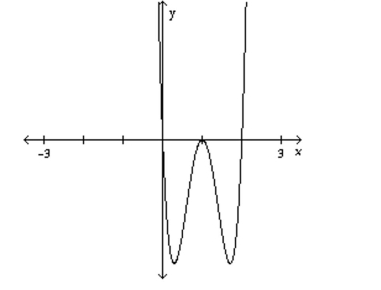
A)
B)
C)
D)
-Which of the following polynomial functions might have the graph shown in the illustration below?

A)
B)
C)
D)

Unlock Deck
Unlock for access to all 350 flashcards in this deck.
Unlock Deck
k this deck
70
Determine the maximum number of turning points of f.
-
A) 7
B) 2
C) 5
D) 6
-
A) 7
B) 2
C) 5
D) 6

Unlock Deck
Unlock for access to all 350 flashcards in this deck.
Unlock Deck
k this deck
71
Use the x-intercepts to find the intervals on which the graph of f is above and below the x-axis.
-
A) above the -axis:
below the x-axis:
B) above the x-axis: ,
below the -axis:
C) above the -axis:
below the -axis:
D) above the -axis:
below the -axis:
-
A) above the -axis:
below the x-axis:
B) above the x-axis: ,
below the -axis:
C) above the -axis:
below the -axis:
D) above the -axis:
below the -axis:

Unlock Deck
Unlock for access to all 350 flashcards in this deck.
Unlock Deck
k this deck
72
Solve the problem.
The profits (in millions) for a company for 8 years was as follows: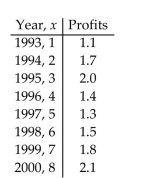 Find the cubic function of best fit to the data.
Find the cubic function of best fit to the data.
The profits (in millions) for a company for 8 years was as follows:
 Find the cubic function of best fit to the data.
Find the cubic function of best fit to the data.
Unlock Deck
Unlock for access to all 350 flashcards in this deck.
Unlock Deck
k this deck
73
Find the indicated intercept(s) of the graph of the function.2133:2139
-
A) Yes
B) No
-
A) Yes
B) No

Unlock Deck
Unlock for access to all 350 flashcards in this deck.
Unlock Deck
k this deck
74
Use the x-intercepts to find the intervals on which the graph of f is above and below the x-axis.
-
A) above the -axis:
below the x-axis:
B) above the -axis:
below the -axis:
C) above the -axis: no intervals
below the -axis:
D) above the -axis:
below the x-axis: no intervals
-
A) above the -axis:
below the x-axis:
B) above the -axis:
below the -axis:
C) above the -axis: no intervals
below the -axis:
D) above the -axis:
below the x-axis: no intervals

Unlock Deck
Unlock for access to all 350 flashcards in this deck.
Unlock Deck
k this deck
75
Solve the problem.
For the polynomial function f(x) a) Find the x- and y-intercepts of the graph of f. Round to two decimal places, if necessary.
a) Find the x- and y-intercepts of the graph of f. Round to two decimal places, if necessary.
b) Determine whether the graph crosses or touches the x-axis at each x-intercept.
c) End behavior: find the power function that the graph of f resembles for large values of |x d) Use a graphing utility to graph the function.Approximate the local maxima rounded to two decimal places, if
d) Use a graphing utility to graph the function.Approximate the local maxima rounded to two decimal places, if
necessary. Approximate the local minima rounded to two decimal places, if necessary.
e) Determine the number of turning points on the graph.
f) Put all the information together, and connect the points with a smooth, continuous curve to obtain the graph of f.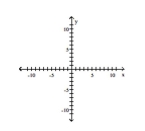
For the polynomial function f(x)
 a) Find the x- and y-intercepts of the graph of f. Round to two decimal places, if necessary.
a) Find the x- and y-intercepts of the graph of f. Round to two decimal places, if necessary.b) Determine whether the graph crosses or touches the x-axis at each x-intercept.
c) End behavior: find the power function that the graph of f resembles for large values of |x
 d) Use a graphing utility to graph the function.Approximate the local maxima rounded to two decimal places, if
d) Use a graphing utility to graph the function.Approximate the local maxima rounded to two decimal places, ifnecessary. Approximate the local minima rounded to two decimal places, if necessary.
e) Determine the number of turning points on the graph.
f) Put all the information together, and connect the points with a smooth, continuous curve to obtain the graph of f.


Unlock Deck
Unlock for access to all 350 flashcards in this deck.
Unlock Deck
k this deck
76
Analyze the graph of the given function f as follows:
(a) Determine the end behavior: find the power function that the graph of f resembles for large values of | (b) Find the x- and y-intercepts of the graph.
(b) Find the x- and y-intercepts of the graph.
(c) Determine whether the graph crosses or touches the x-axis at each x-intercept.
(d) Graph f using a graphing utility.
(e) Use the graph to determine the local maxima and local minima, if any exist. Round turning points to two decimal places.
(f) Use the information obtained in (a) - (e) to draw a complete graph of f by hand. Label all intercepts and turning points.
(g) Find the domain of f. Use the graph to find the range of f.
(h) Use the graph to determine where f is increasing and where f is decreasing.

(a) Determine the end behavior: find the power function that the graph of f resembles for large values of |
 (b) Find the x- and y-intercepts of the graph.
(b) Find the x- and y-intercepts of the graph.(c) Determine whether the graph crosses or touches the x-axis at each x-intercept.
(d) Graph f using a graphing utility.
(e) Use the graph to determine the local maxima and local minima, if any exist. Round turning points to two decimal places.
(f) Use the information obtained in (a) - (e) to draw a complete graph of f by hand. Label all intercepts and turning points.
(g) Find the domain of f. Use the graph to find the range of f.
(h) Use the graph to determine where f is increasing and where f is decreasing.


Unlock Deck
Unlock for access to all 350 flashcards in this deck.
Unlock Deck
k this deck
77
Solve the problem.
-The amount of water (in gallons) in a leaky bathtub is given in the table below. Using a graphing utility, fit the data to a third degree polynomial (or a cubic). Then approximate the time at which there is maximum amount
Of water in the tub, and estimate the time when the water runs out of the tub. Express all your answers rounded
To two decimal places.
A) maximum amount of water after 5.37 minutes; water runs out after 11.06 minutes
B) maximum amount of water after 8.23 minutes; water runs out after 19.73 minutes
C) maximum amount of water after 5.31 minutes; water runs out after 8.23 minutes
D) maximum amount of water after 5.31 minutes; water never runs out
-The amount of water (in gallons) in a leaky bathtub is given in the table below. Using a graphing utility, fit the data to a third degree polynomial (or a cubic). Then approximate the time at which there is maximum amount
Of water in the tub, and estimate the time when the water runs out of the tub. Express all your answers rounded
To two decimal places.
A) maximum amount of water after 5.37 minutes; water runs out after 11.06 minutes
B) maximum amount of water after 8.23 minutes; water runs out after 19.73 minutes
C) maximum amount of water after 5.31 minutes; water runs out after 8.23 minutes
D) maximum amount of water after 5.31 minutes; water never runs out

Unlock Deck
Unlock for access to all 350 flashcards in this deck.
Unlock Deck
k this deck
78
Analyze the graph of the given function f as follows:
(a) Determine the end behavior: find the power function that the graph of f resembles for large values of | (b) Find the x- and y-intercepts of the graph.
(b) Find the x- and y-intercepts of the graph.
(c) Determine whether the graph crosses or touches the x-axis at each x-intercept.
(d) Graph f using a graphing utility.
(e) Use the graph to determine the local maxima and local minima, if any exist. Round turning points to two decimal places.
(f) Use the information obtained in (a) - (e) to draw a complete graph of f by hand. Label all intercepts and turning points.
(g) Find the domain of f. Use the graph to find the range of f.
(h) Use the graph to determine where f is increasing and where f is decreasing.

(a) Determine the end behavior: find the power function that the graph of f resembles for large values of |
 (b) Find the x- and y-intercepts of the graph.
(b) Find the x- and y-intercepts of the graph.(c) Determine whether the graph crosses or touches the x-axis at each x-intercept.
(d) Graph f using a graphing utility.
(e) Use the graph to determine the local maxima and local minima, if any exist. Round turning points to two decimal places.
(f) Use the information obtained in (a) - (e) to draw a complete graph of f by hand. Label all intercepts and turning points.
(g) Find the domain of f. Use the graph to find the range of f.
(h) Use the graph to determine where f is increasing and where f is decreasing.


Unlock Deck
Unlock for access to all 350 flashcards in this deck.
Unlock Deck
k this deck
79
Use the Factor Theorem to determine whether x - c is a factor of f(x).
-
A) Yes
B) No
-
A) Yes
B) No

Unlock Deck
Unlock for access to all 350 flashcards in this deck.
Unlock Deck
k this deck
80
Analyze the graph of the given function f as follows:
(a) Determine the end behavior: find the power function that the graph of f resembles for large values of | (b) Find the x- and y-intercepts of the graph.
(b) Find the x- and y-intercepts of the graph.
(c) Determine whether the graph crosses or touches the x-axis at each x-intercept.
(d) Graph f using a graphing utility.
(e) Use the graph to determine the local maxima and local minima, if any exist. Round turning points to two decimal places.
(f) Use the information obtained in (a) - (e) to draw a complete graph of f by hand. Label all intercepts and turning points.
(g) Find the domain of f. Use the graph to find the range of f.
(h) Use the graph to determine where f is increasing and where f is decreasing.

(a) Determine the end behavior: find the power function that the graph of f resembles for large values of |
 (b) Find the x- and y-intercepts of the graph.
(b) Find the x- and y-intercepts of the graph.(c) Determine whether the graph crosses or touches the x-axis at each x-intercept.
(d) Graph f using a graphing utility.
(e) Use the graph to determine the local maxima and local minima, if any exist. Round turning points to two decimal places.
(f) Use the information obtained in (a) - (e) to draw a complete graph of f by hand. Label all intercepts and turning points.
(g) Find the domain of f. Use the graph to find the range of f.
(h) Use the graph to determine where f is increasing and where f is decreasing.


Unlock Deck
Unlock for access to all 350 flashcards in this deck.
Unlock Deck
k this deck



